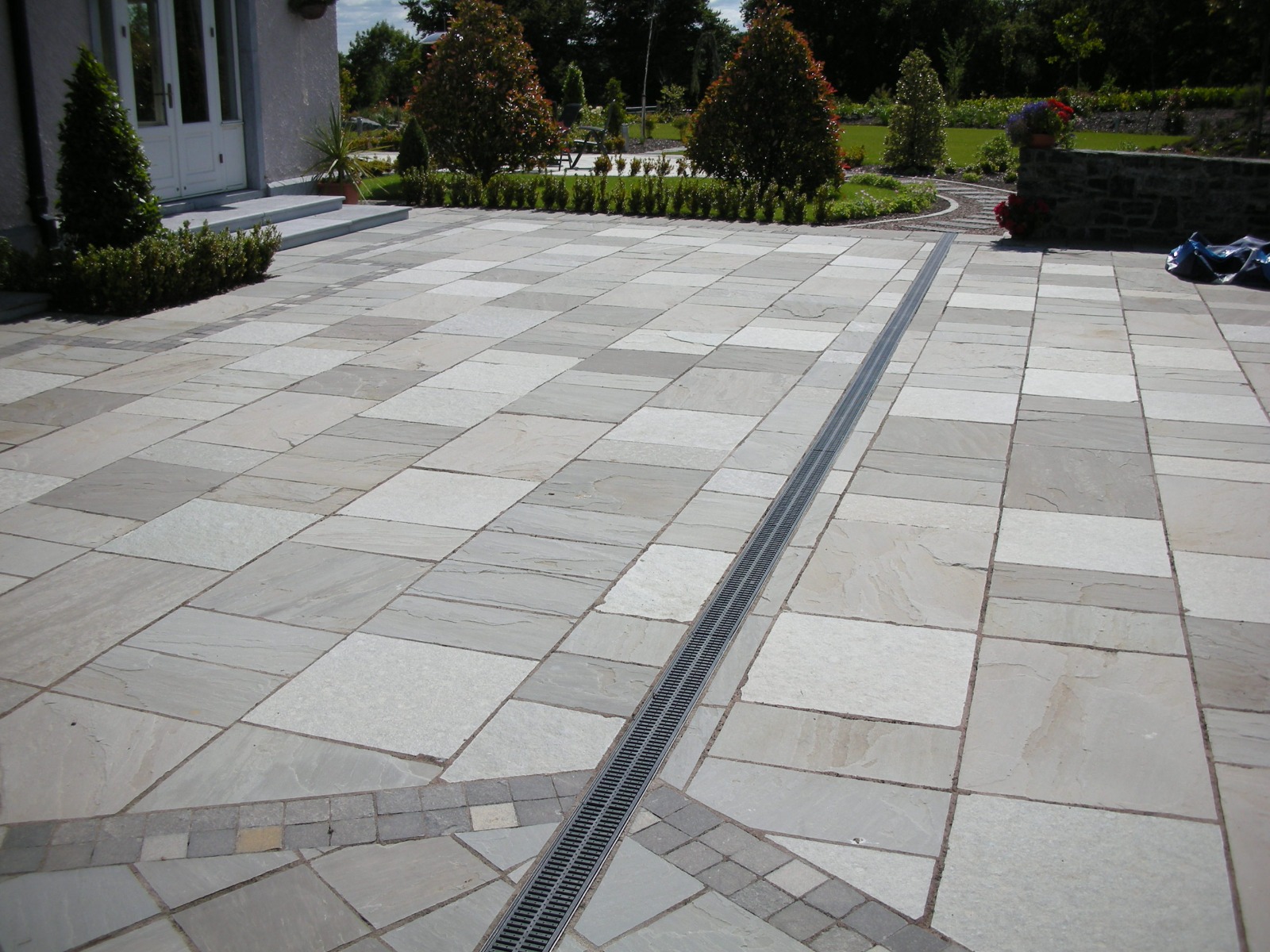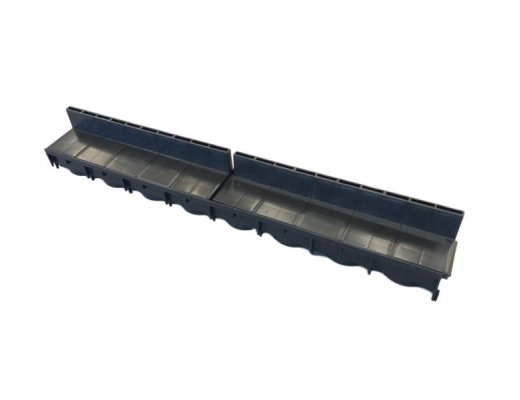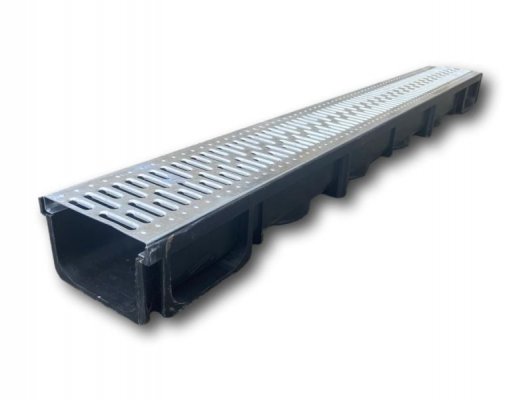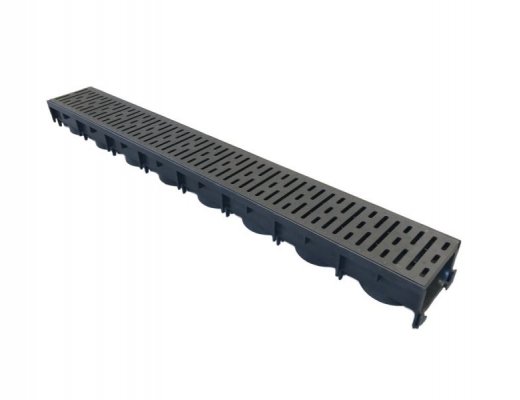Where's all that water going?
I was asked to undertake a presentation to professional garden designers recently, at which the preferred topic for the day-long course was "Drainage For Designers". The day went well, the feedback was, inexplicably, overwhelmingly popular, and the delegates generally agreed they had taken away valuable knowledge of genuine relevance to their practice. What I took away from the day was the fact that a subject I personally take for granted as basic, everyday and simple represents a real challenge for many others and, for a few, a gaping hole in their knowledge.
Grey Sandstone Paving With Linear Channel Drain By Hayes Ryan Landscape Architecture
Where do designers learn about drainage nowadays? What about installers? Where are they learning about drainage? There doesn't seem to be any proper training about drainage for pavements and gardens, and most practitioners seem to pick it up as they go along, watching how others do it, or from dis-assembling systems already in place. That doesn't seem anywhere near adequate enough, but to date, it's only the designers that have been big enough to say so. Contractors, still dominated by the macho creed of never admitting to not knowing, tend to bluster on regardless, relying on an awkward blend of a trickle of knowledge, a smattering of observation, and a generous dollop of guesswork.
I asked a few experienced contractors, landscape architects and designers about gradients: what's the minimum fall for surface water pipe? It's 1:100 (1%) according to the Building Regulations, but almost three - quarters didn't know that, mostly guessing it was 1:40 or 1:20. What about the positioning of access chambers? Where are they mandatory? The most popular answer was that an access chamber was needed when two or more branches joined a line. Whats the maximum depth you can work at without using shoring? 3 out of 20 got this right (1.2m) but the rest were split fairly evenly between those working dangerously deep (2m or even 3m being a popular answer) and those wasting good money on possibly unnecessary walers and braces.
A question put solely to the installers was would they, like the Garden Designers on the day, be interested in a "Drainage Basics" course? 1 of the 12 said they'd think about it, with the rest believing they knew enough to get by and would happily muddle on as they are.
This luddite attitude is so prevalent with the British (and even the Irish) construction trade. The reluctance to acquire new basic skills and the ridiculing of anyone that regards training as a valuable investment in their business is a serious character flaw and one that seems peculiar to these islands. The attitude in Europe, in Northern America, Australia, and increasingly in Africa is far more progressive and welcoming, with a genuine appetite, in some cases a raging thirst, for knowledge.
Mountcharles Sandstone Paving With Galvanised Grid Channel Drain
Regardless of this worrying disregard for training and business development, drainage remains a fundamental aspect of paving and garden design, and one that does require some basic understanding and appreciation to ensure whatever is installed functions properly and is an efficient as possible.
Unlike driveways, there is no legislative compunction to use SuDS (Sustainable drainage system) for gardens and patios, but increasingly, we are moving towards reliance on such solutions rather than simply dumping water into gullies, hoppers and linear channels. This most often involves directing surface water onto garden areas, but we need to be sure the garden can cope and won't simply be inundated. Or we use sokaways, but how many can honestly claim to understand exactly what's required from a soakway and how that can be efficiently constructed? And how do we cope with the heavy clay soils that challenge us with so many gardens and patios?
SuDS, land drainage, rain gardens, linear channels, slot drains, the anachronistic " French Drain", permeable surfaces, Type 3 sub-bases, attenuation cells, composites, waffle boards, soakaways.... where do we learn all this stuff?
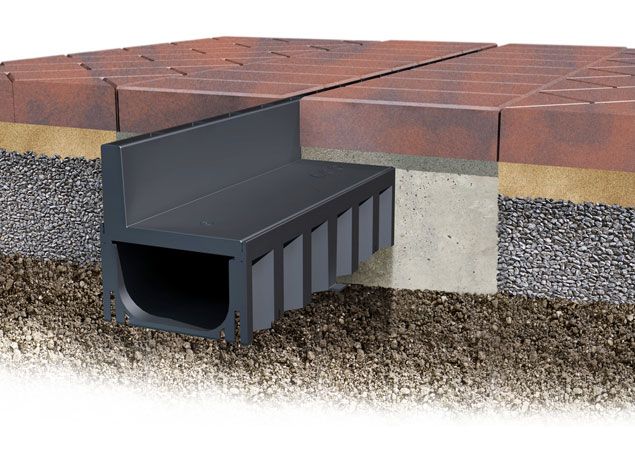
Poly Brick Slot Channel Drain
Effective SuDS required an understanding of the local groundwater conditions, the whereabouts of the water table, and, most importantly, an awareness of soil permeability. How can we be sure that a couple of storm crates buried beneath the lawn will be sufficient? Or that the planters and flower beds will be able to cope with the all the surface water being sent in their direction? This isn't something that can be guessed or assumed. This level of Knowledge has to be learned, but where? Who's teaching this ? The standard industry manuals are technically heavy going and, ironically, rather dry to read.
Which brings us back to the starting point: so many of us are relying on a mix of best guess, experience and crossed fingers, rather than asking for guidance and help.
This partly explains the nonsense 'Splash Strips' I see far too often nowadays, 100 - 150mm wide gravel - filled gaps between paving and the house, all underlain by the thick-ish bed of near -impermeable mortar. How does that work? And what about the phantom drains at driveways thresholds, a line of linear channels connected to nothing at all, maybe the end-caps have been left off or a hole has been punched into the base of one channel. Is that really a drainage solution? Is it really, at best, a bodge, or, more likely, outright cheating?
You can't have good paving without effective drainage. They go together, hand-in-hand, like cheese-and-onion, horse-and-carriage, Ant-and-Dec. Without effective drainage, the paving inevitably suffer. It might be that there's standing water rendering the carefully chosen flagstones potentially dangerous in wet or wintry weather, or saturated sub-layers encouraging slippery algae and lichens to colonise the surface and reducing the service life.
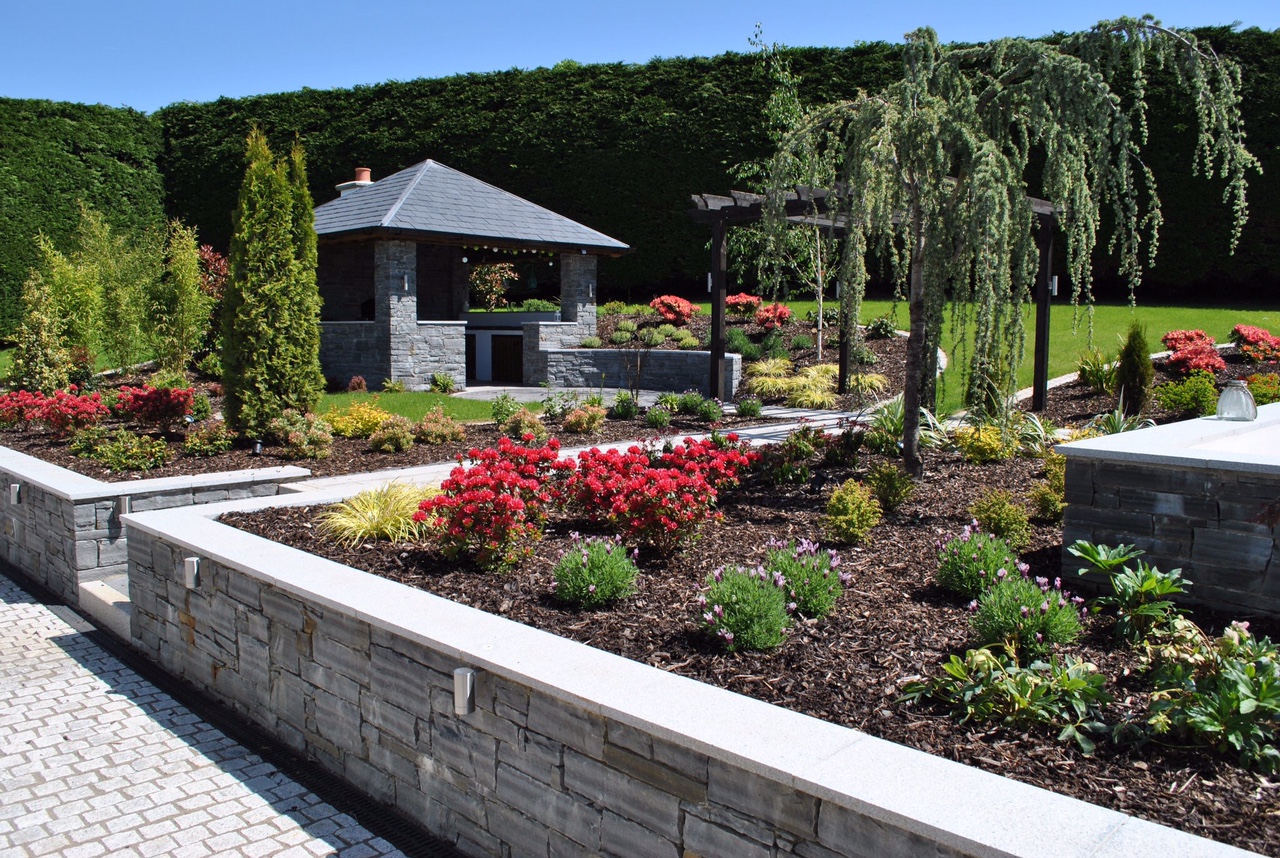
Silver Granite Setts With Channel Drain By Kevin Cooper Garden Design
Every paving project needs a drainage plan. Ask yourself, or ask your contractor or designer: how will this paving be drained? To where will all the surface water go? When there's no demonstrably sound answer, its probably best to bring in someone else, someone that can provide logical and workable answers.
Excellent advice by Tony McCormack who sadly passed away in September 2022. Tony was known to many through his website, pavingexpert.com. Tony was widely regarded as an irreplaceable source of guidance, reference, expertise and information to the paving and landscaping industries. Tony had a wealth of knowledge, which he was eager to share with others. His legacy will live on. RIP Tony.
